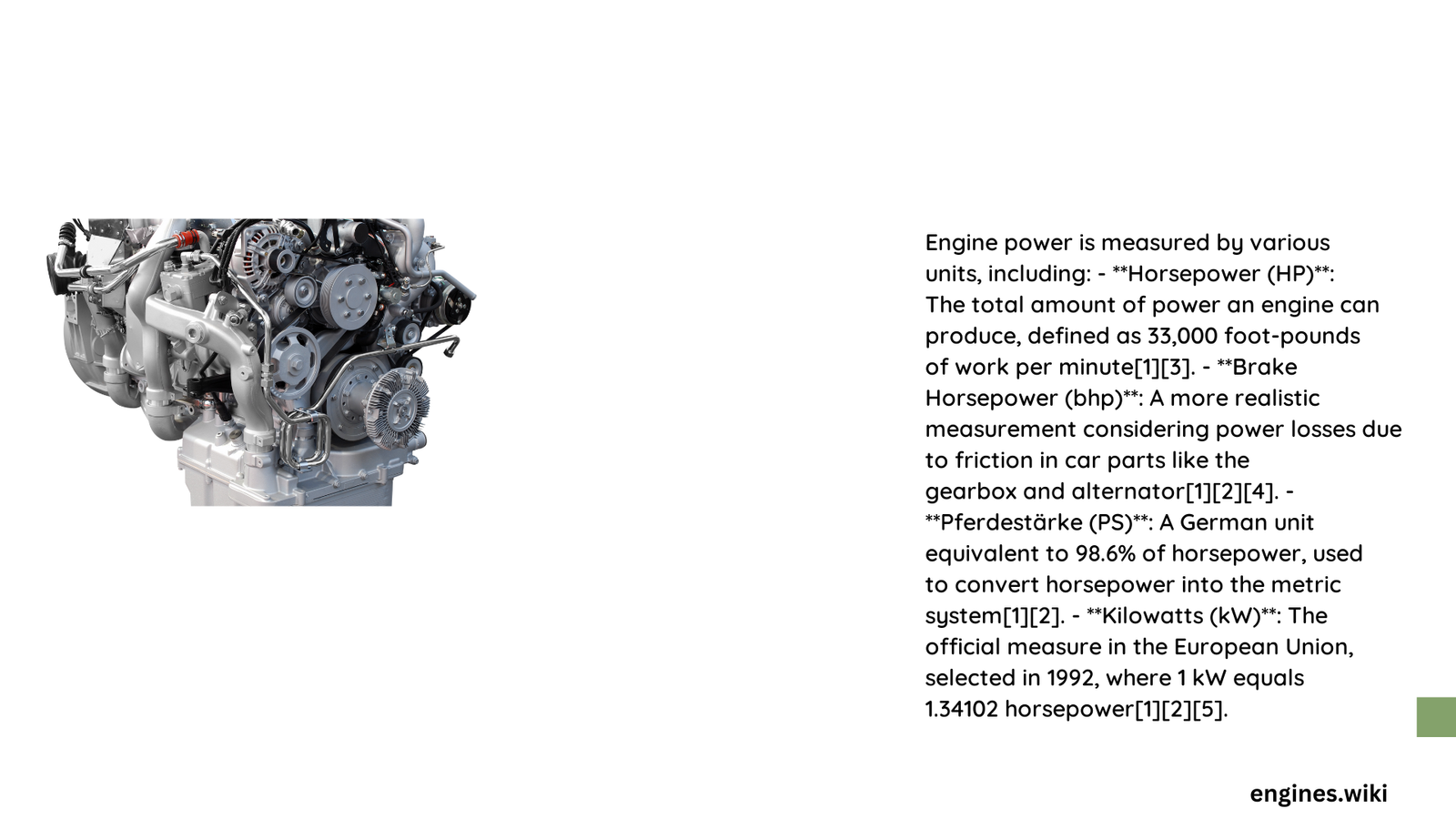Engine power measurement is a complex process involving sophisticated techniques and specialized equipment that translate mechanical force into quantifiable performance metrics. Engineers and automotive professionals utilize multiple units and methods to accurately determine an engine’s power output, accounting for various environmental and mechanical factors that influence performance.
What Are the Primary Units for Engine Power?
Engine power can be quantified through several standardized measurement units, each offering unique insights into mechanical performance:
Horsepower (HP) Measurement
- Traditional Definition: 1 HP = 33,000 foot-pounds per minute
- Metric Conversion: 1 HP = 745.69987 watts
- Practical Application: Widely used in automotive and industrial sectors
Kilowatts (kW) Measurement
- Metric System Standard: Primary international power measurement unit
- Conversion Rate: 1 kW = 1.341 HP
- Engineering Preference: Preferred by technical professionals for precision
How Do Dynamometers Determine Engine Power?

Dynamometers represent the most sophisticated method for measuring engine power, employing various techniques:
| Dynamometer Type | Measurement Technique | Accuracy Level |
|---|---|---|
| Prony Brake | Mechanical friction measurement | Moderate |
| Hydraulic Dynamometer | Fluid resistance conversion | High |
| Eddy Current Dynamometer | Electromagnetic resistance | Very High |
Power Calculation Formulas
Professionals use specific mathematical formulas to calculate engine power:
Horsepower = (Torque × RPM) ÷ 5,252
Kilowatts = (2π × Torque × RPM) ÷ 60,000
What Factors Influence Power Measurement Accuracy?
Several critical factors impact the precision of engine power measurements:
- Environmental Conditions
- Atmospheric pressure
- Temperature
-
Humidity levels
-
Mechanical Considerations
- Frictional losses
- Accessory load
- Transmission efficiency
Why Are Multiple Measurement Units Necessary?
Different industries and regions require specific power measurement standards:
- Automotive: Typically uses HP and kW
- Industrial Engineering: Prefers metric kilowatts
- European Markets: Often utilize Pferdestärke (PS)
What Equipment Supports Power Measurement?
Essential tools for accurate engine power assessment include:
- High-precision dynamometers
- Torque sensors
- Advanced tachometers
- Computerized data acquisition systems
Challenges in Power Measurement
Professionals must navigate complex challenges:
– Standardizing measurement conditions
– Accounting for mechanical inefficiencies
– Ensuring instrumentation calibration
Cost Considerations
Power measurement equipment ranges significantly:
– Basic dynamometers: $5,000 – $20,000
– Advanced testing systems: $50,000 – $250,000
Conclusion
Measuring engine power requires a sophisticated blend of scientific principles, advanced technology, and precise instrumentation. Engineers continue to refine techniques, ensuring increasingly accurate performance assessments.
